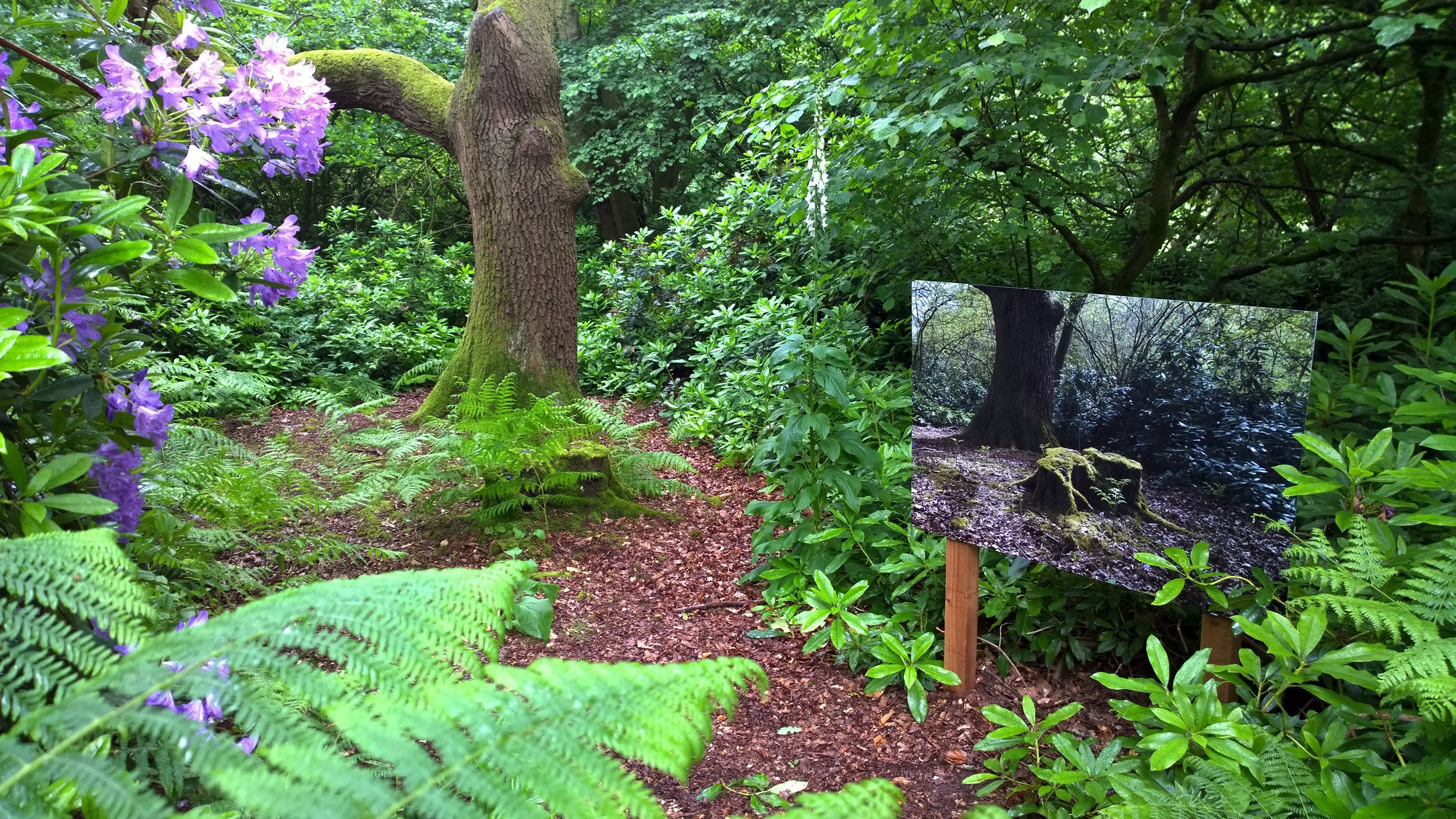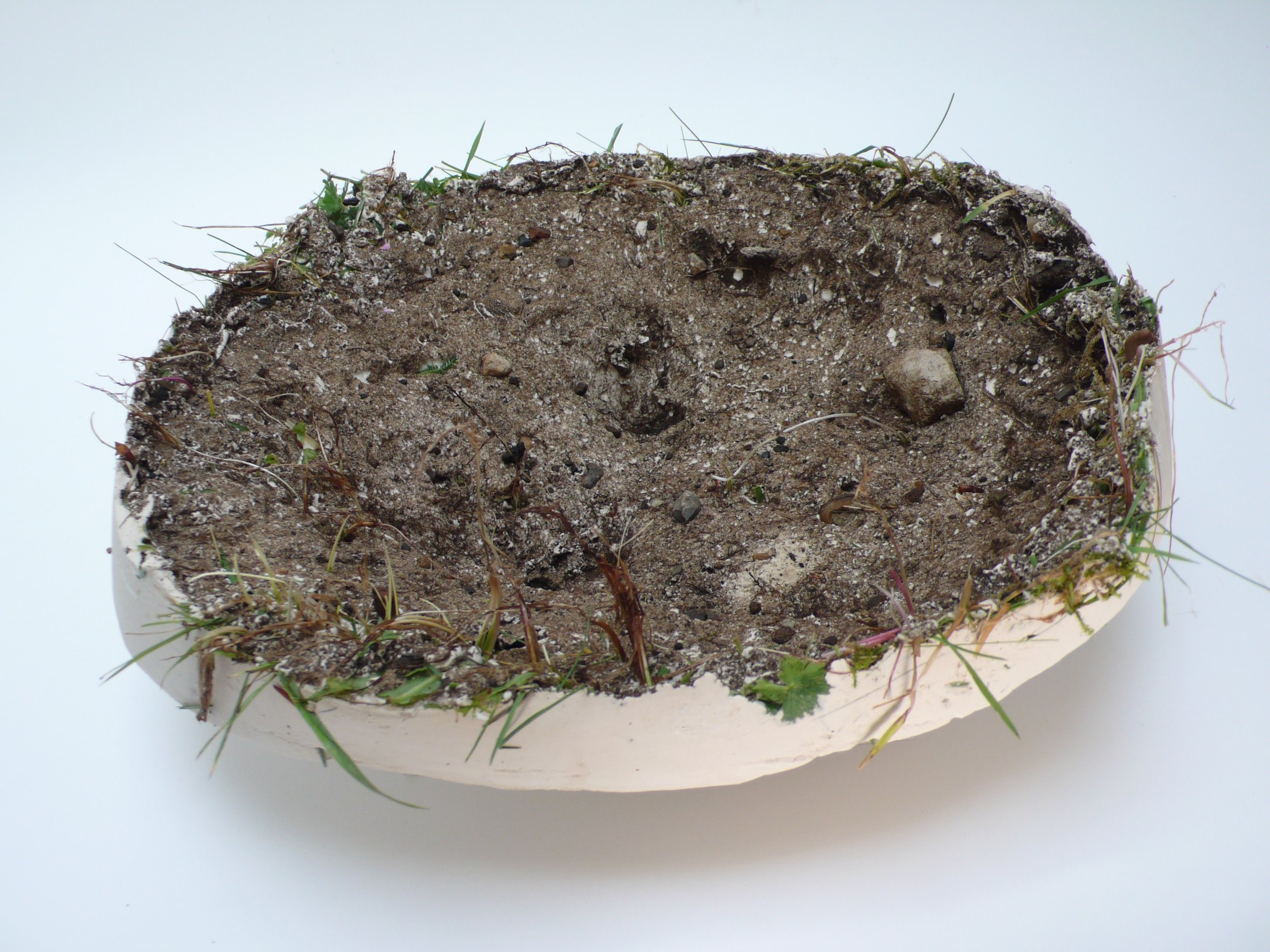
On Arriving/ Watts Artist Village and Gallery, Surrey sponsored by the University for the Creative Arts, Farnham/ 2016
Over the course of a one-year artist in residency programme at Watts Artist Village in Surrey, Kearney explored how the act of seeing and obverting prompted him to re-examine the relationship to the changing environment and how one perceives the role of art and display within Watts estate in particular.
Building on his exploration of materiality as a way of translating thoughts and ideas into a form that opened ways for new meaning to arise, Kearney merged his own approach to clay and ceramic casting, fabric constructions and reflective surfaces such as mirrors and image-making of the constructed landscape to study ideas on traditional art-making processes which by the use of human-made materials, found objects and photography became abstractions in the narrative development of the processes themselves.
Using various site-specific locations within Watts Artist Village, Kearney created temporary interventions in both the studio, gallery and the surrounding woodland, which by creating disruption prompt us to assess our own relationship with time and space.
Different media converged in installations that draw from the rich heritage Frederic and Mary Watts left us with, exploring ways in which to use archival material and artistic processes to rethink the notion of object and landscape and thus of human and artistic interventions.
Foreward in Catalogue by Professor Simon Ofield-Kerr was Vice Chancellor of the University of the Creative Arts Farnham/ 2016
All the artworks were carried out during a one-year residency at Watt’s Artist Village and supported by The University for the Creative Arts, Farnham, England.
On Arriving
Embarking on an extended journey affords us the opportunity to step out of our everyday routines and have some time to reflect and absorb what we discover on the way. ‘On Arriving’ is the culmination of one such journey, his one-year artist-in-residence program at Watts Gallery - Artist Village, sponsored by the University for the Creative Arts. Watt’s Gallery is not only dedicated to perpetuating the legacy of Mary and GF Watts but is also a cultural destination and a stop on the pilgrimage to Canterbury.
The journey commences with a weekly train commute from Central London to Surrey. Gradually, the dense urban context dematerialises into nature; not wild or untamed nature but the people-managed and constructed nature we have learned to understand as the countryside. In a constant and cyclical system, trees are planted, pruned, and felled, fields are sown and harvested, animals are bred and farmed. Wherever we look there are signs of human intervention in nature, a kind of continuous mark-making exercise on a seemingly boundless scale. With this in mind, the time spent on the journey is an opportunity to reflect on the construction of the natural environment and on its anomalies; those elements outside human control that we tend to miss in our everyday routines.
Paying notice to the transformation of the landscape, the management of the woodland, the shifts in the quality of light and sound as the trees shed their leaves, or the changes in the overall colour of the ground as seasons develop, exposes the way the Artist Village encounters its setting and how it is perceived and experienced. Meanwhile, getting acquainted with those settings allows for a change in focus towards the micro within and, as the pace slows down, we become aware of discrete marginal events that, like the moles burrowing in the paddocks or the piling of logs in the woodland, temporarily disrupt the general order and expose new underlying narratives.
Yet, this place cannot only be understood as a landscape. Created by Mary and GF Watts the Village is a place where families live, art is presented and produced, and the landscape and the community came together blurring the boundary between the indoors and the outdoors, and between the domestic and the public realm. There is something alluring about entering these buildings, imagining how the space was used and how GF Watts’ collection of inanimate objects on display in the vitrines of the studio were once handled. Sitting side by side, the different hands, limbs and heads make us aware of their similitudes and of the small details that make them unique and different.
Arriving at a new place requires us to appropriate our surroundings, to understand our relationship with the landscape and its buildings, the people we encounter and the underlying history of the place. By the re-contextualising time, space and narrative in works that require us to take a second look, to re-examine that which is there with new eyes, the interventions that together compose ‘On Arriving’ exposes the viewer to a new narrative layer that reshapes their own reading of the natural landscape, the construction of place, the perpetuation of memory, the definition and redefinition of identity, as well as revealing the experience of producing and displaying artwork within the context of the multi-faceted place and space that is Watts Gallery - Artist Village.
Essay for Catalogue by Aitor Albo















